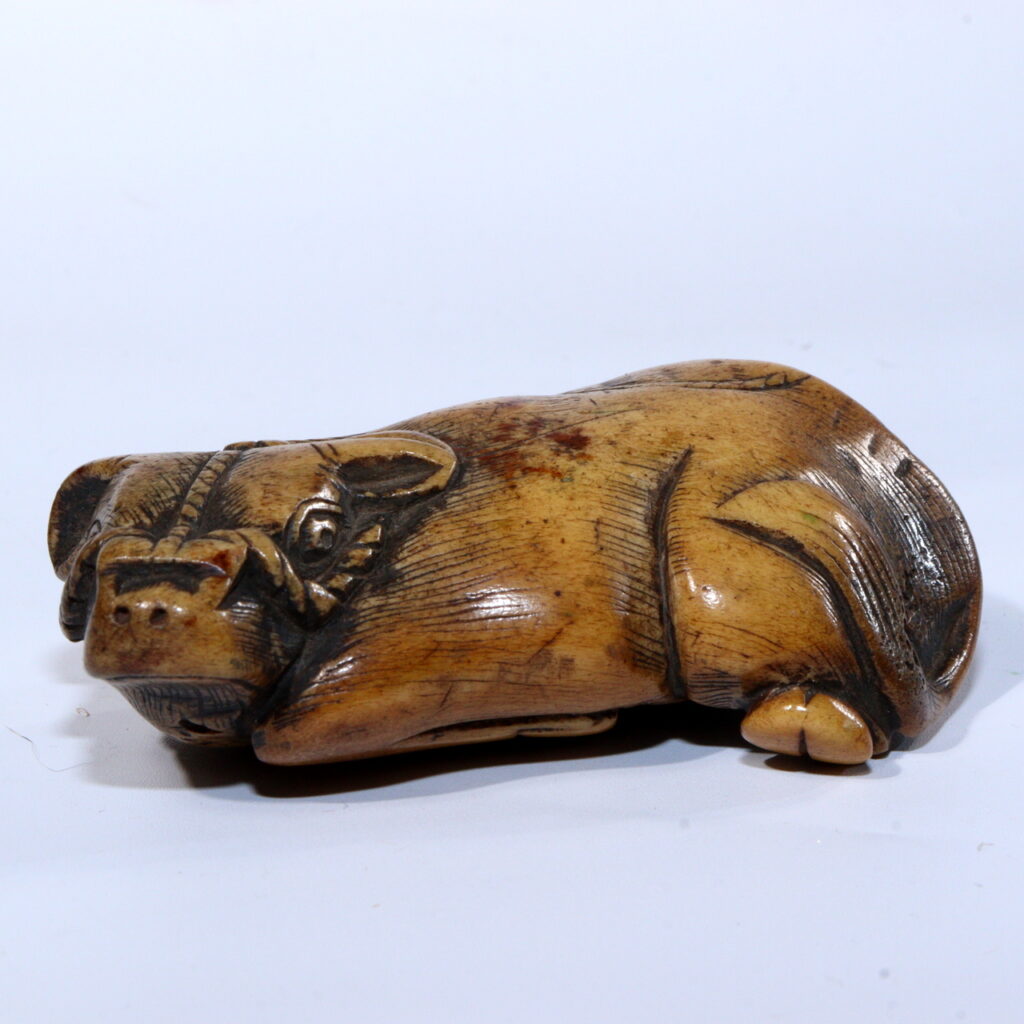
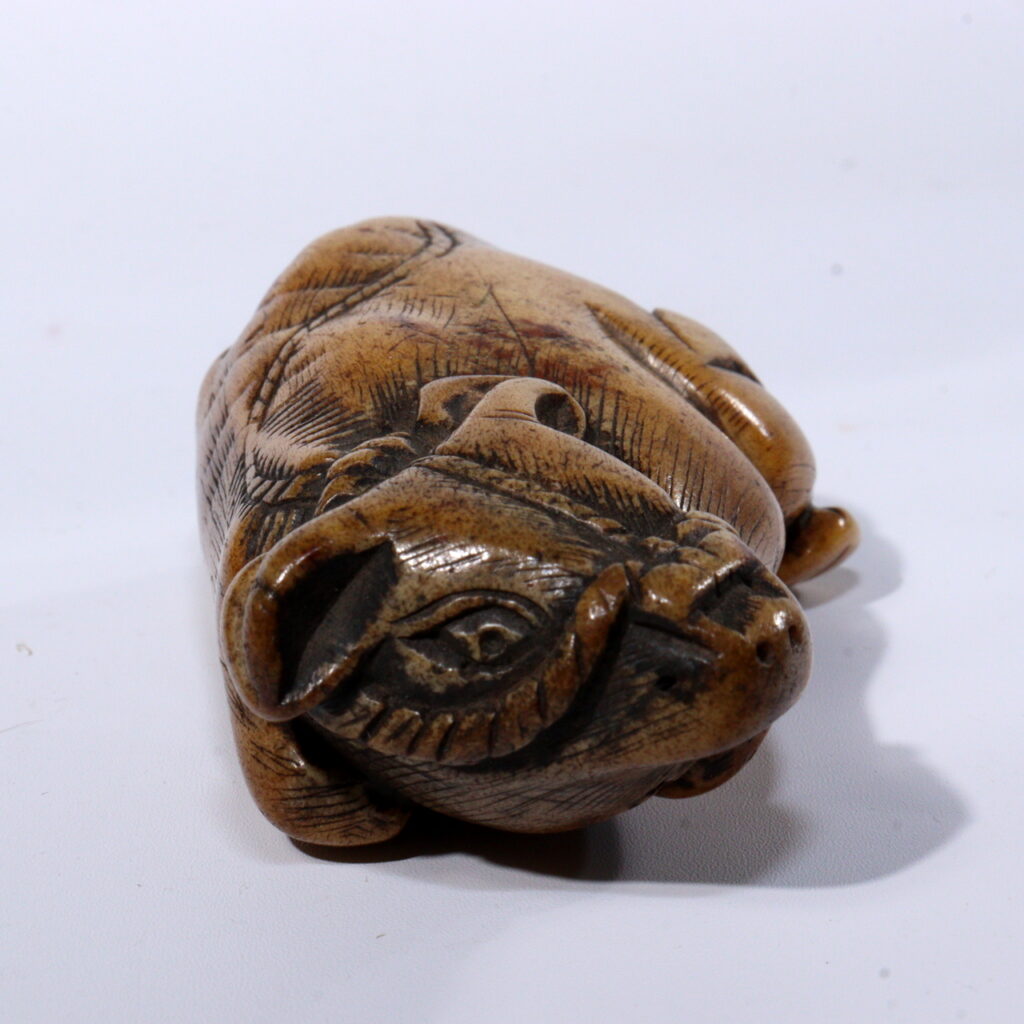
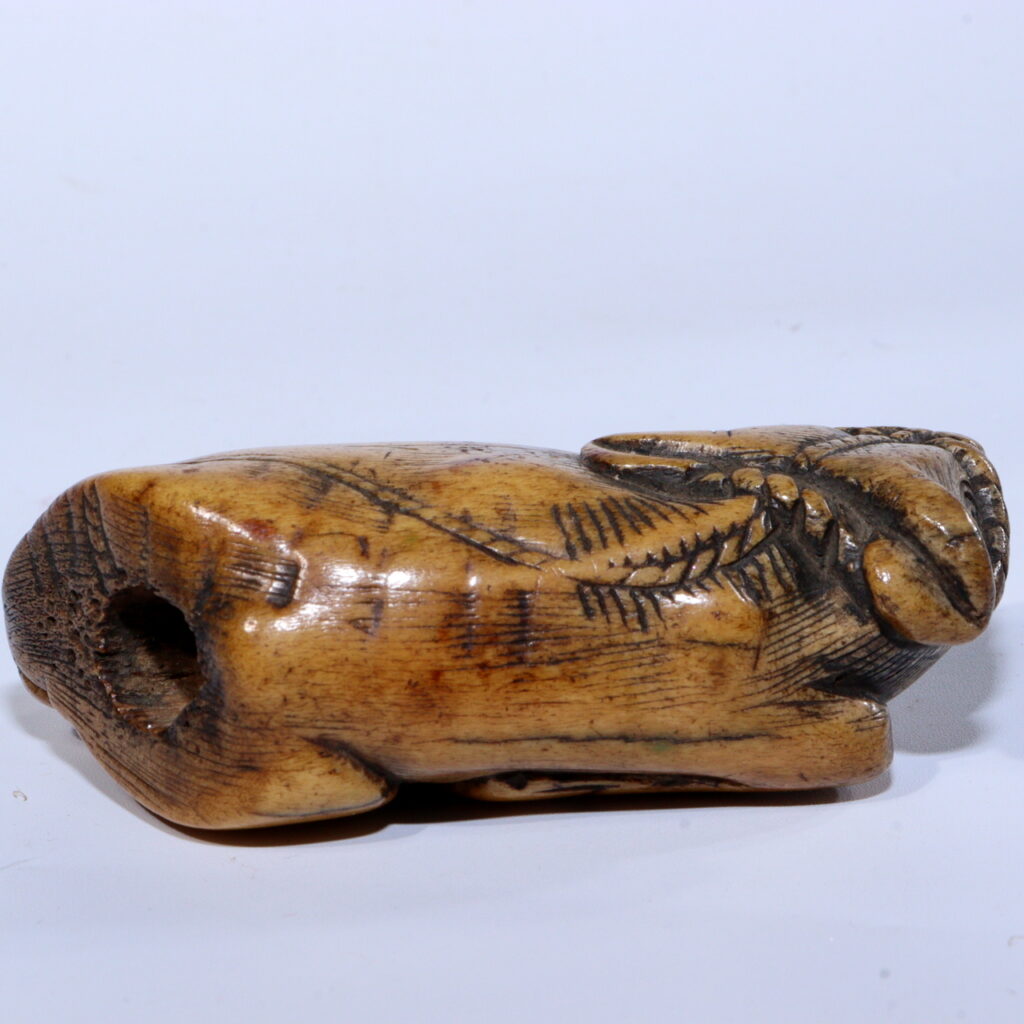
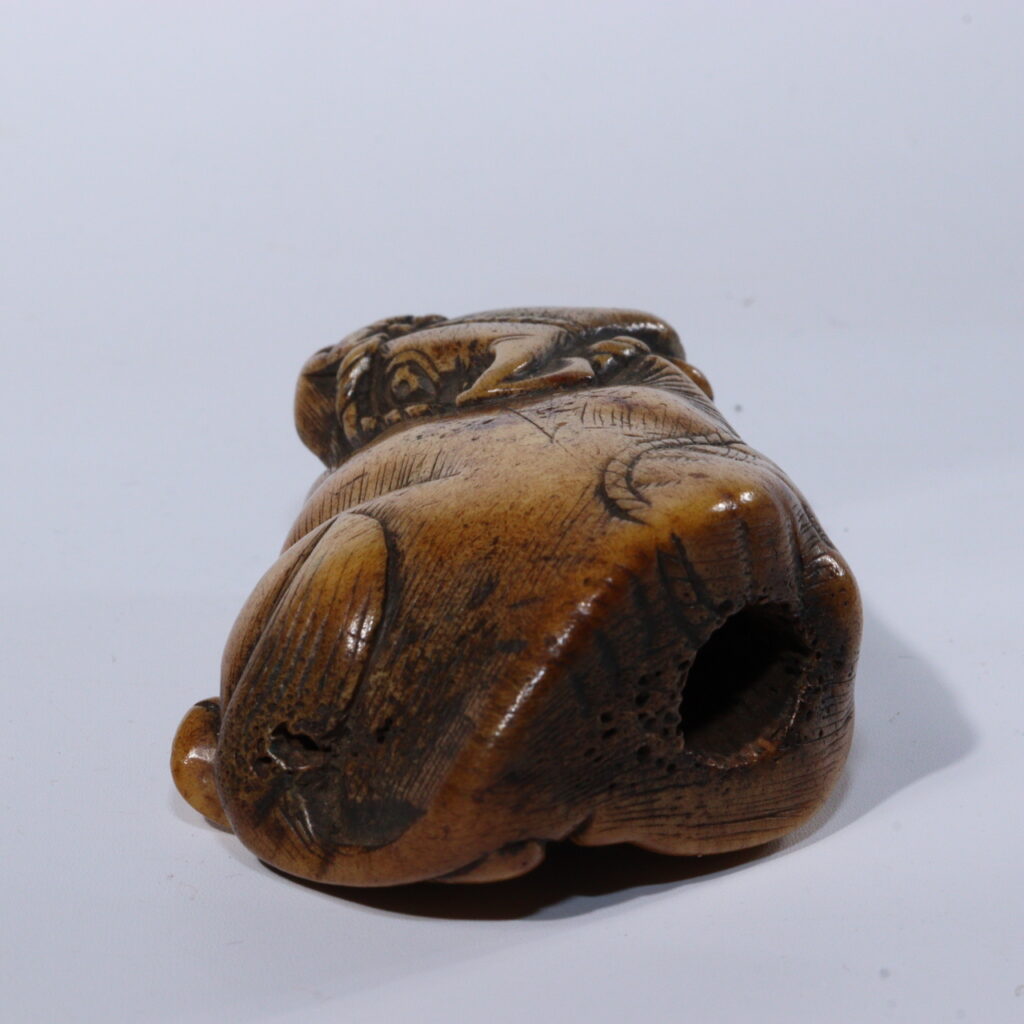
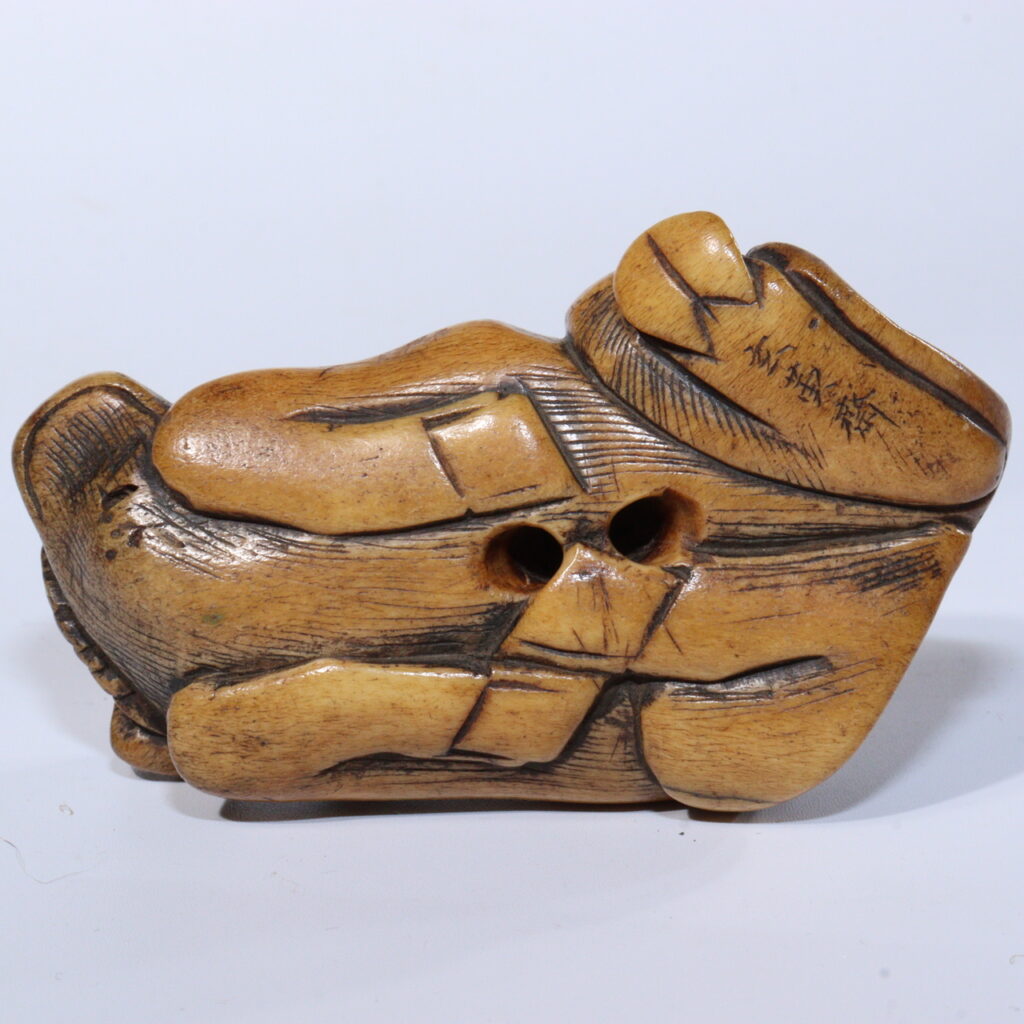
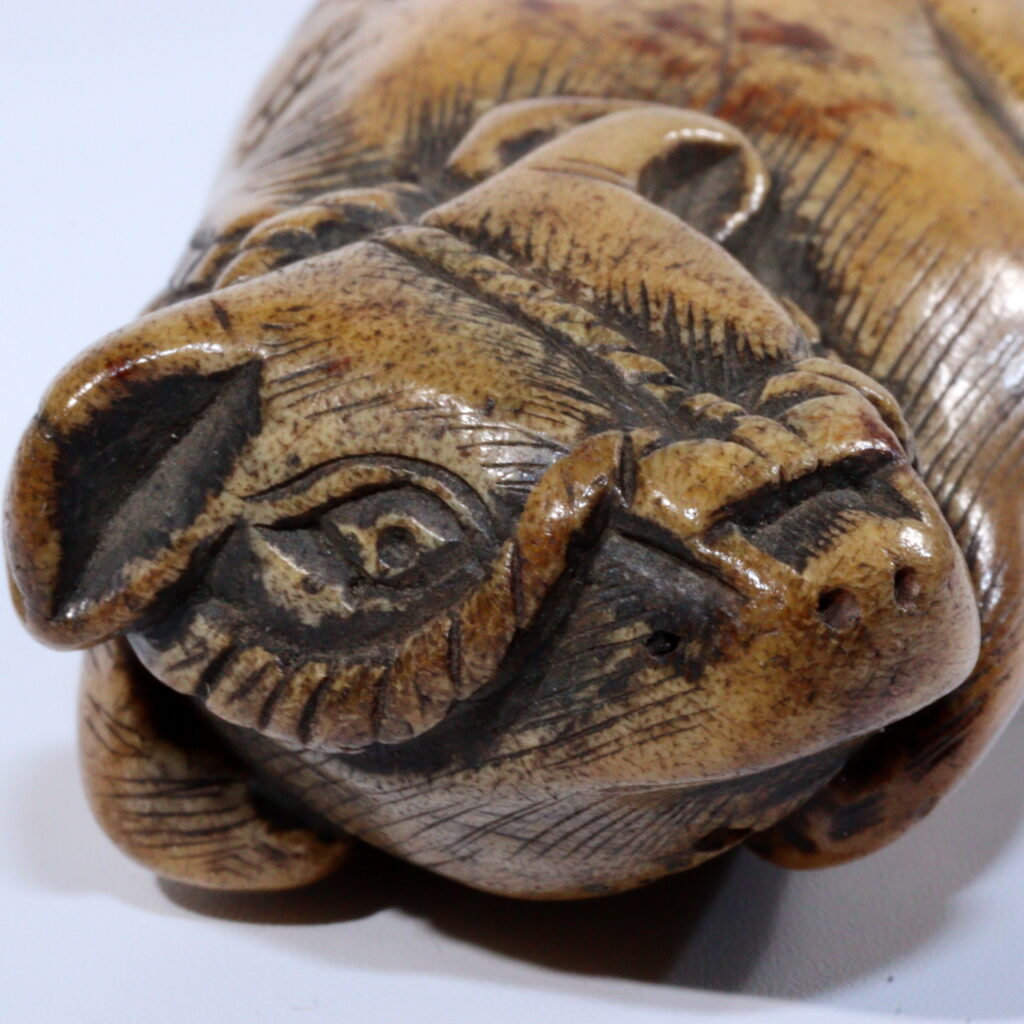
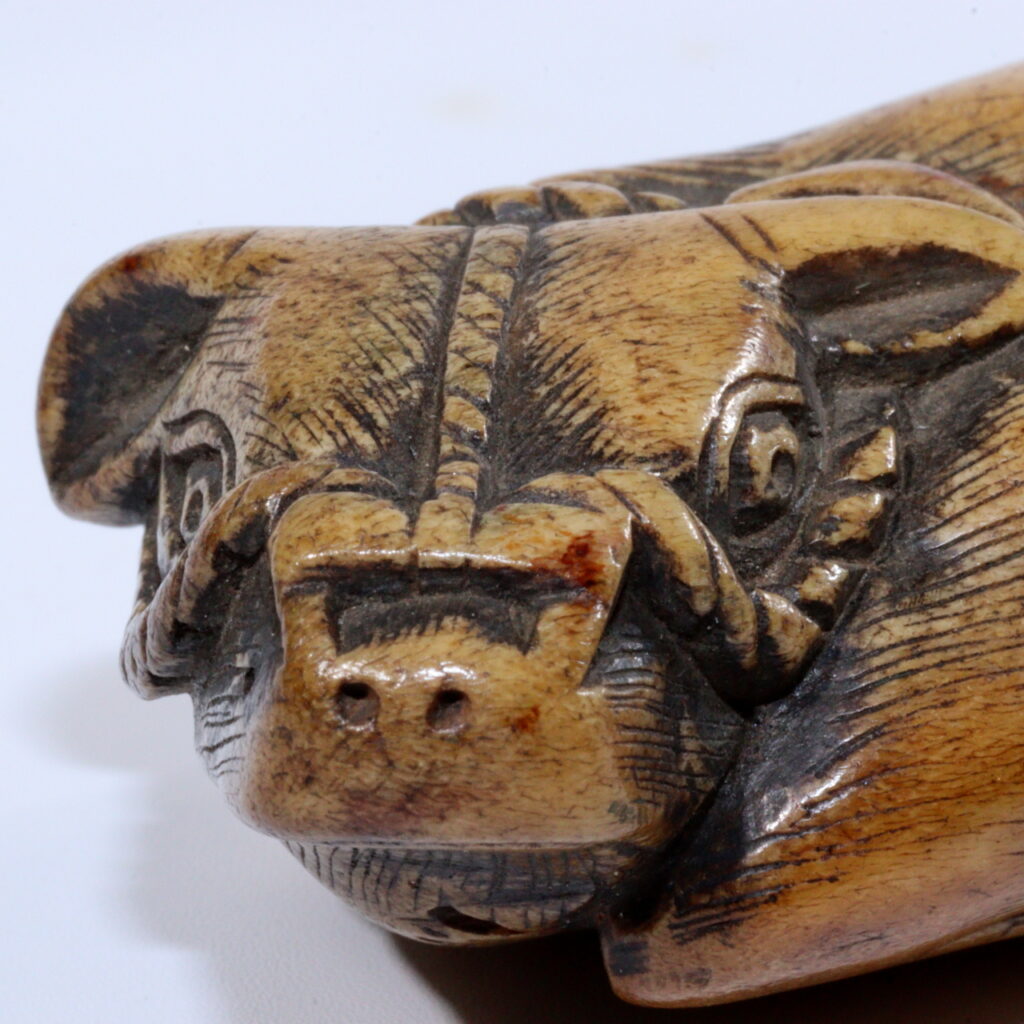
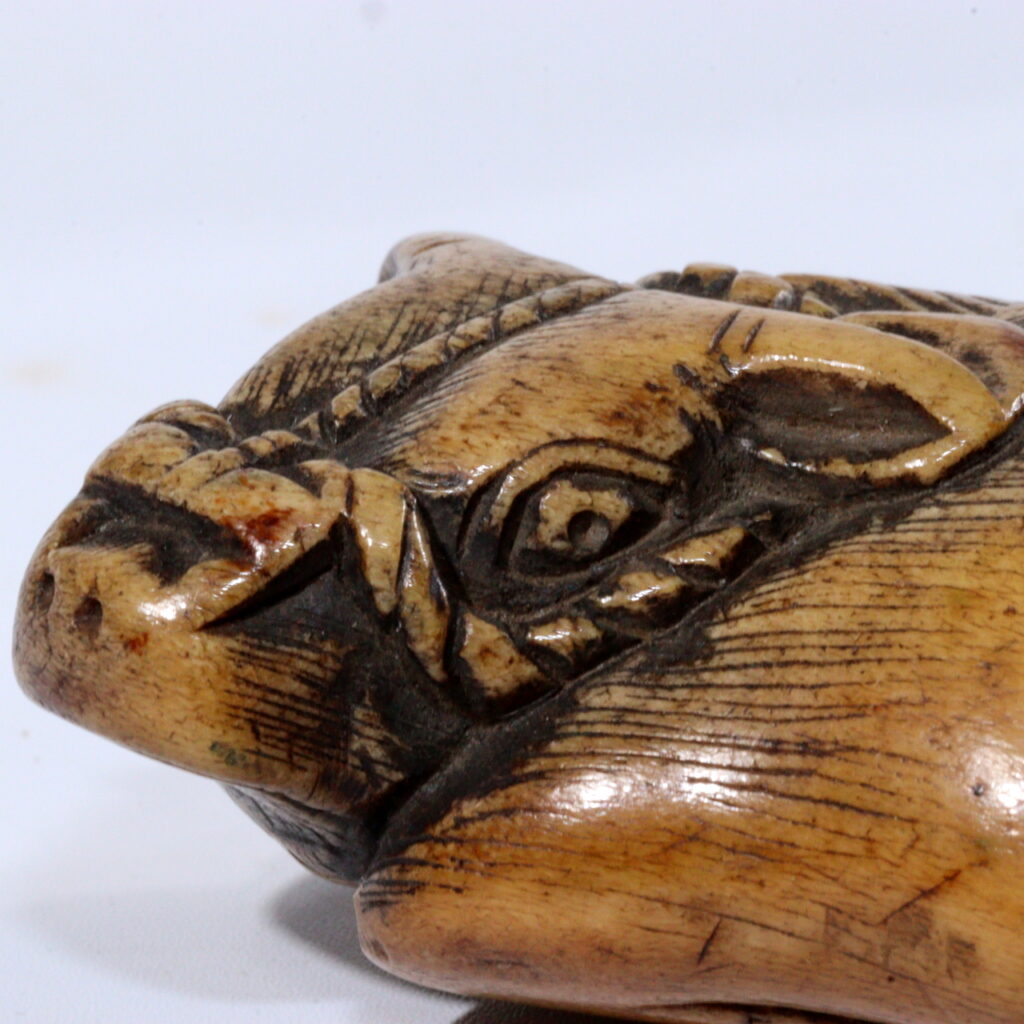
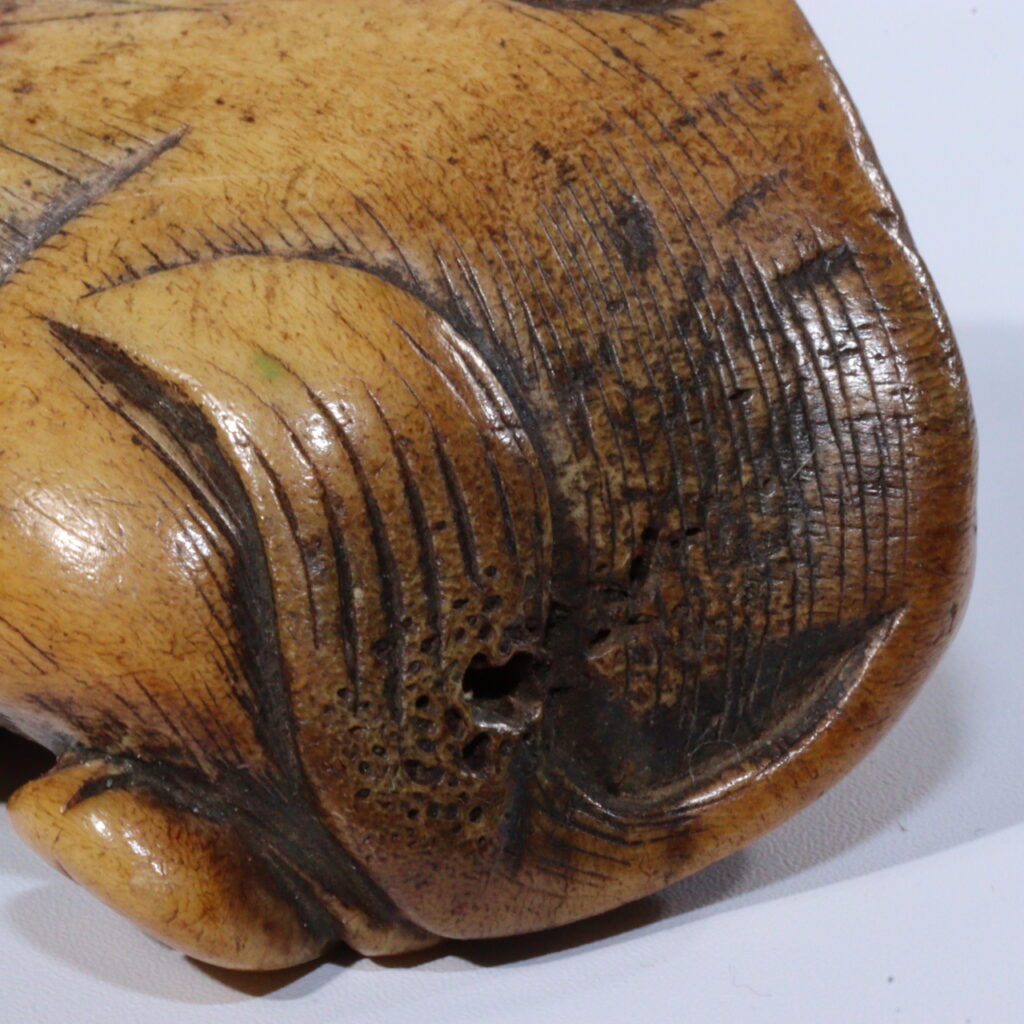
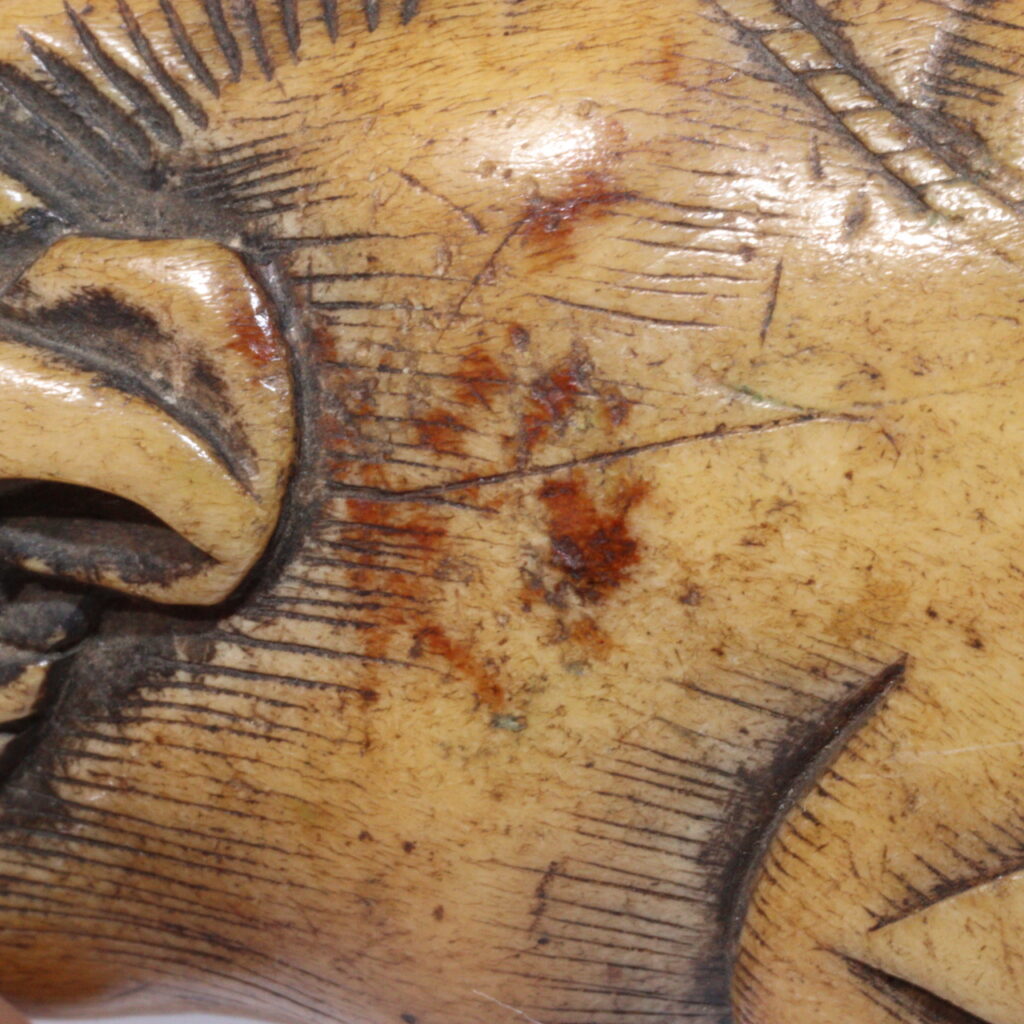
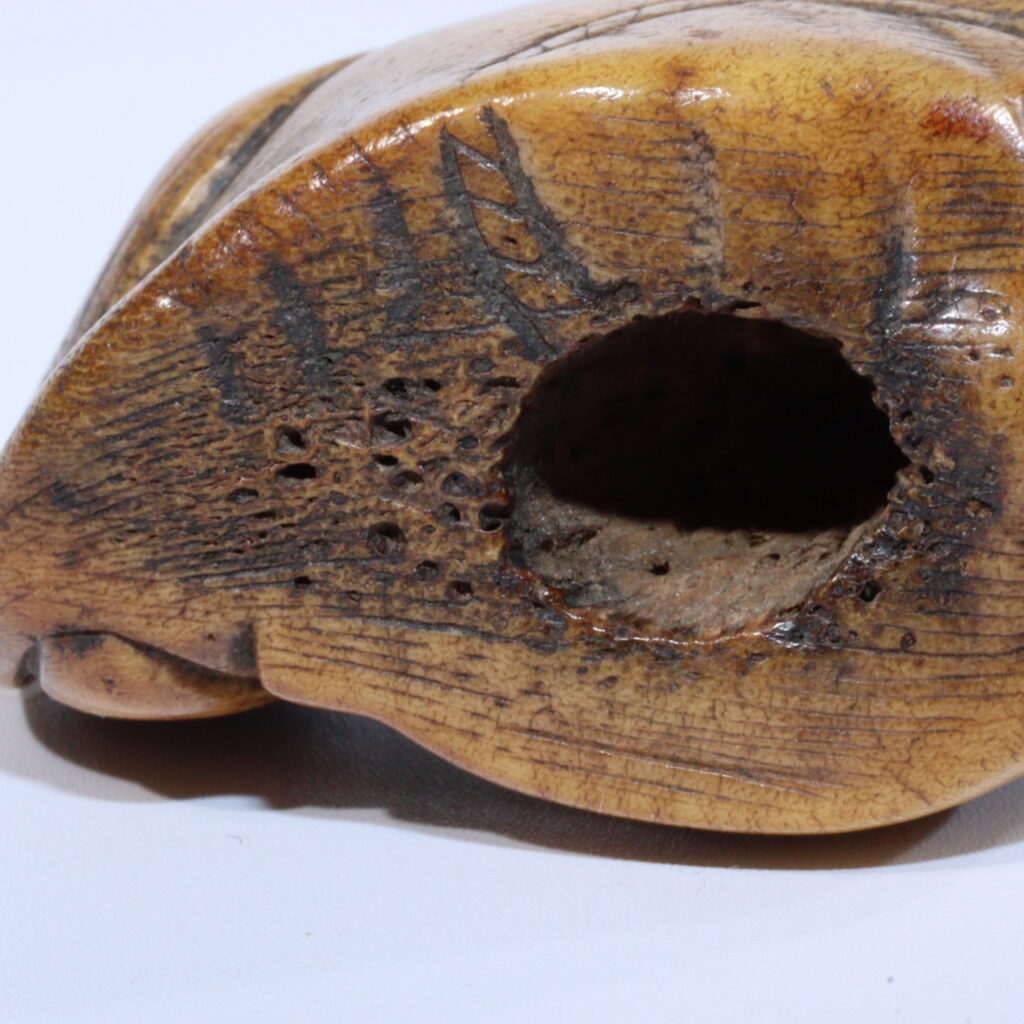
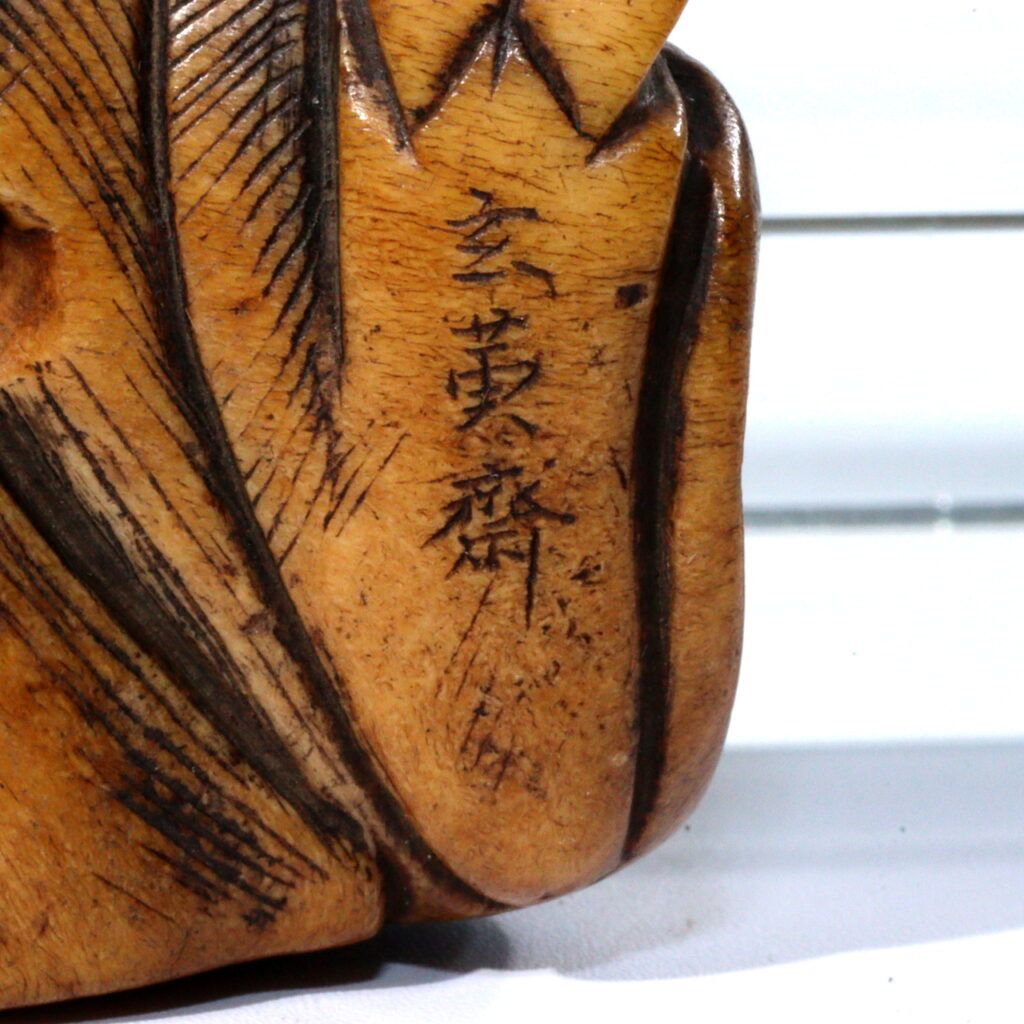
了解しました。それではご指定の商品情報をもとに、**英語のブログ記事(カテゴリ:Item Stories)**を作成いたします。SEOを意識しつつ、知的で上品なトーンでまとめました。以下をご確認ください。
Large Japanese Antique Netsuke Cow Cattle Early Edo Period Signed Kazuno
Introduction
Among the many treasures of Japanese antiques, few capture the quiet dignity of daily life as vividly as a netsuke. This large antique netsuke of a cow, crafted in the early Edo period and signed by the artist Kazuno, is not merely a functional toggle but a window into the cultural spirit of its age.
The Story Behind This Item
The Edo period (1603–1868) was a time of peace and flourishing arts in Japan. Netsuke, originally designed as small toggles to secure inro or pouches worn at the obi (sash), quickly evolved into miniature sculptures celebrated for their craftsmanship and expressiveness.
This cow netsuke reflects the symbolic role of cattle in Edo-period society. Cows were not only essential for agriculture but also revered in folk belief as creatures embodying patience and perseverance. The signature of Kazuno carved on the underside adds to its historical authenticity, linking the piece to the artistry of early Edo workshops.
The Charm and Highlights of This Piece
What makes this netsuke remarkable is its large size and finely balanced proportions. The smooth contours, rounded body, and attentive expression of the cow suggest both strength and gentleness—a duality that resonated with Edo-period sensibilities.
Unlike ceramic or bronze artifacts of the Meiji and later periods, netsuke were crafted from organic materials and imbued with a tactile warmth. Over centuries, the patina acquired from careful handling enhances its character, making each piece unique. In this respect, it shares the philosophy of kintsugi—the Japanese art of embracing imperfection and celebrating time’s passage.
Value for International Collectors
For collectors abroad, netsuke hold a special position among Japanese antiques. While larger Buddhist or Shinto artifacts carry ceremonial weight, netsuke distill artistry into a compact form that bridges daily function and aesthetic beauty. A signed piece from the early Edo period—particularly one representing a culturally significant animal—offers both scholarly value and aesthetic charm.
Such items are increasingly sought after by connoisseurs of Japanese art, standing alongside Meiji-era bronzes, ceramic tea wares, and lacquer inro. Their portability and rich cultural symbolism make them prized additions to collections worldwide.
Conclusion
This Large Japanese Antique Netsuke Cow Cattle, Early Edo Period, signed Kazuno is a rare and evocative example of Japan’s miniature carving tradition. More than just an object, it is a story carved in time—a testament to patience, artistry, and enduring cultural memory.
👉 View this item on Koedo Sun Art
If this piece is sold out, please explore our other curated collections here:
👉 Browse our collection of Japanese antiques